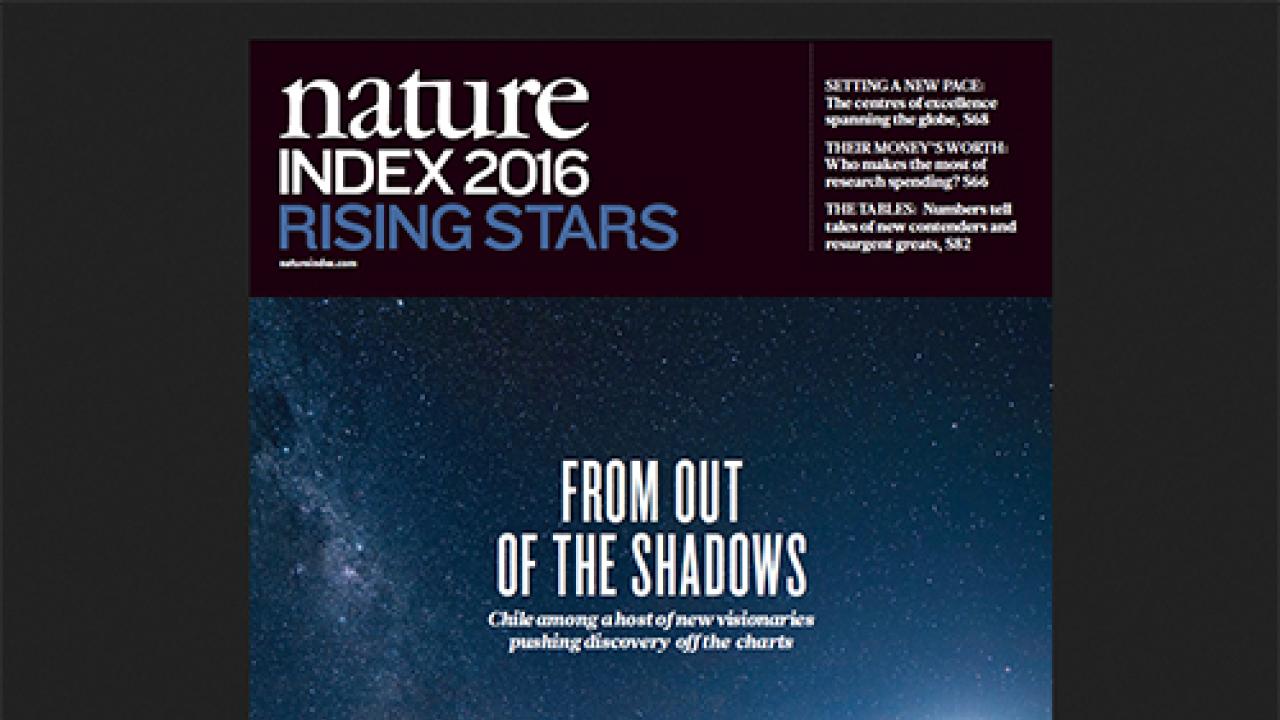
Good news for UNESP, the São Paulo State University: the international science journal Nature includes the Brazilian institute in its 2016 Index of Rising Stars, a list of the world’s top 100 science institutes whose research output improved significantly from 2012 to 2015. UNESP is ranked first in South America, and 81st globally, with a percentage improvement in the evaluation metrics of about 110% in the last four years. Nature's ranking highlights particularly the university's research strengths in physics and astronomy and the important role played by the ICTP-South American Institute for Fundamental Research (ICTP-SAIFR), the regional centre for theoretical physics created in collaboration with UNESP and the São Paulo Research Funding Agency (FAPESP).
The aim of the Nature Index is to identify the most promising institutions in the research world, looking for new competitors in the scientific arena. With more than 8000 institutions globally tracked from 2012 to 2015, the index evaluates performance in academic publishing, considering a selection of top natural-science journals and applying a metric known as weighted fractional count (WFC). In this context, UNESP and ICTP-SAIFR are emerging as a valuable regional scientific competitor.
ICTP-SAIFR was initiated in a Memorandum of Understanding signed in Trieste in November 2010 by ICTP and UNESP, and the first meeting of the Steering Committee was held in Foz do Iguaçú in June 2011. The ICTP-SAIFR is located in the Instituto de Fisica Teorica building in the Barra Funda campus of UNESP, and its activities are modeled on those of ICTP, including schools and workshops, as well as an active visiting scientists program.
The Nature Index cites UNESP’s excellence in physics and astronomy, a result that reflects the importance of ICTP's Brazilian offshoot. Scientists at ICTP-SAIFR, in fact, have co-authored several papers ranked among the most cited in UNESP’s altmetric score. One of those papers, published in Physical Review Letters, detailed the observation of gravitational waves from a binary black hole detected by the the Laser Interferometer Gravitational-Wave Observatory (LIGO). A group at ICTP-SAIFR, led by physicist Riccardo Sturani, contributed to the LIGO discovery by analysing compact binary coalescence data, information produced when two objects--such as black holes--form a compact orbit around each other and eventually merge (read related story).
ICTP-SAIFR researcher Fabio Iocco has also contributed to UNESP’s success as lead- and co-author of several papers published in prestigious science journals, including Nature Physics. He says of the Nature Index, “This result is particularly important for us at SAIFR, considering how Nature stresses the importance of theoretical physics and astronomy. And for the latter we are a relatively small community in UNESP: the involvements in LIGO and DES (Dark Energy Survey)--by Riccardo Sturani and Rogerio Rosenfeld, respectively--and my own group, are all nurtured within SAIFR.”
As pointed out in Nature's article, UNESP embarked on a hiring frenzy starting from 2009 with more than 1,000 faculties and researchers recruited. From 2012 to 2015, its contribution to high-quality science journals in the Nature Index more than doubled. For ICTP-SAIFR, however, the next aim is to consolidate the boost to growth with a build-up of competitive student classes. Among the appealing opportunities offered to young scientists, Iocco underscores seminars, mini-courses, schools, workshops and joint-PhD programs: “For instance, at ICTP-SAIFR we frequently offer international school events, attracting students from all over South America; in the last month I followed the Dark Matter School as one of the organizers,” says Iocco, adding “The excitement of the participating students was palpable, and their response creates an energy which is a constant drive for our growth.”
--Alessandro Vitale
















